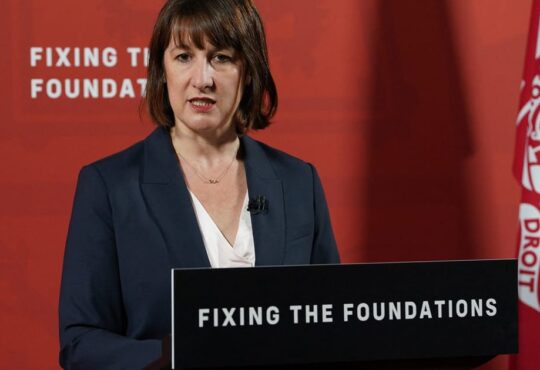
We all know that prices have been surging for some time: Whether it’s the weekly shopping, dinner and drinks on the weekend, long-awaited holiday planning or renovation works in the home, the impact of inflation is being felt by everybody, at all times, every day.
Ireland has two main measures of inflation, the well-known Consumer Price Index, or CPI, is based on a huge monthly shopping basket of 51,000 items of goods and services that the Central Statistics Office (CSO) undertakes every month.
The second measure is the Harmonised Index of Consumer Prices, or HICP, calculated by Eurostat, the official statistics agency of the EU. Untangling the two inflation stories told by the two measures is fascinating.
While many have become accustomed to this new normal, a lot has changed in a relatively short period of time.
Less than a year ago, negative interest rates from the European Central Bank (ECB) meant some banks penalised their customers for holding onto money, and lenders were pushed to issue more loans to businesses and consumers, thus further increasing the supply of money.
With all this cash held by some households swirling in the economy, coupled with a thirst for spending following the extensive lockdowns, lost time was quickly made up, reflected in soaring levels of demand and economic activity.
Fast forward and the exorbitant spending of the post-covid era is now a dim and distant memory, with those same negative interest rates a thing of the past.
With a strong focus on spending, many forgot or even ignored the extensive supply bottlenecks that made satisfying demand even harder when the economy re-opened in 2021.
Ireland, along with the rest of the eurozone saw domestic demand grow sharply as movement restrictions eased, with prices following in an upward trend. A few months later, Russia’s invasion of Ukraine caused a host of energy-related costs to spike, with wholesale prices soaring 227% in March last year.
More recently, food inflation has also surged, with prices more than 10% higher now than they were a year ago despite recent pledges to cut prices from supermarkets.
In addition, home renovations have become increasingly challenging, with maintenance and repair costs up 9% annually, and building materials — including insulation, cement, and metals — all seeing notable price hikes.
In addition, continued interest rate increases by the ECB since July last year have had a dramatic impact on consumers, with last month’s rate hike — its eighth increase in less than a year — adding a further €80 a month to mortgage repayments for up to 740,000 Irish households.
The ECB is widely expected to raise rates by a further quarter point on Thursday. And whether or not the ECB continues to hike rates after its summer break in September, homeowners and businesses are becoming increasingly exposed to rising interest rates.
Combined, these factors have contributed to a hefty cost-of-living crisis as soaring prices remain slower to fall than expected, resulting in continued high inflation. Despite falling from its 38-year high last year, price levels remain notably high, especially amongst core items which exclude energy and food.
Few people know that the two measures of inflation tell different stories. What has caused this sudden apparent incoherence between the two measures? In June, Eurostat reported Irish inflation to be 4.8%, but figures from Ireland’s CSO tell a much different story.
In the past, the CPI and the HICP produced almost identical results, differing by as little as a fraction of a percentage point. However, in the past few months, there has been a divergence between these two key measures of price changes in the economy.
As we have seen, Eurostat reported the headline Irish rate of 4.8% in June, however, for the same month, the CSO posted a rate of 6.1%, a staggering difference.
Euro area annual #inflation at 5.5% in June 2023, down from 6.1% in May https://t.co/64UeInSVjV pic.twitter.com/dy1UQWRo7W
— EU_Eurostat (@EU_Eurostat) July 19, 2023
As two significantly contrasting inflation figures emerge, so too do two contrary narratives, with analysts and policymakers able to cite different figures depending on what supports different policy responses.
Addressing this disparity in its most recent inflation findings, the CSO said it had become particularly prevalent in recent months “due to some items having different weights in the respective indices”, with the marginal differences in the items counted resulting in dramatic disparities in overall inflation figures.
Producing identical figures as recently as December 2022, the two measures began to part ways in January, with the CPI surpassing Eurostat’s inflation measure by a meagre 0.3%. Since then, however, the disparity has grown more and more month by month.
Consumer prices rose by 6.1% over the 12 months to June 2023https://t.co/BgiV6pnHDf#CSOIreland #Ireland #CPI #ConsumerPrices #Inflation #Deflation #Prices #BusinessStatistics #Business #BusinessNews #IrishBusiness pic.twitter.com/UtzdpbKmcU
— Central Statistics Office Ireland (@CSOIreland) July 13, 2023
While traditionally producing similar measurements, there are several items included in one measure that is omitted in the other measure, giving rise to this growing disparity.
In the CSO’s recently published inflation figures, the division with the largest price increases in the last 12 months was to be found in the category of housing, water, electricity, gas and other fuels, which were up by just under 16% annually, with the increase largely driven by higher mortgage interest repayments.
They had soared by more than 46% year-on-year. Following eight consecutive rate hikes by the ECB, mortgage holders for the first time in over a decade have become targets of the central bank’s rate increases.
The latest interest rate hike in June left around 200,000 tracker mortgages exposed. But recent data show that the majority of new mortgage deals are for fixed-term loans and these households will in time face the fallout from higher interest rates.
Furthermore, mortgage brokers have said that if the ECB were to hike rates next week, and also in September, that the cumulative half-a-point rise in mortgage rates would add €80 a month, or €960 for a full year, to the cost of households servicing a mortgage of €300,000.
Just last week, Irish mortgage rates once again surpassed the eurozone average, according to the Central Bank here. Climbing to 3.8% in May, the average interest rate for a new mortgage exceeded the eurozone average of 3.7%, which also continue to rise in line with ECB official rates.
Yet, despite the significance of mortgage interest rates in an Irish context, they are not included in Eurostat’s measure of inflation. Speaking to the , a spokesperson for Eurostat said that the EU-wide and harmonised measure was designed to assess price stability and was not intended to be a cost-of-living index.

“The national consumer price index (CPIs) serves different national purposes. For that reason, some of the underlying concepts and methods of national CPIs may deviate from the requirements for the HICP,” said the Eurostat spokesperson.
While not having the same influence, other items included in the CPI, but not in Eurostat’s measure, include motor car tax, motor cycle tax, building materials, motor car insurance, home insurance, as well as trade union subscriptions.
Looking at the data, the impact of continued hikes in mortgage interest rates is easily identifiable in recent inflation figures.
According to the CSO, June inflation increased by 6.1% in annual terms, however, when mortgage interest rates are excluded, this figure decreases to just 5%, which is far more comparable to Eurostat’s June figure of 4.8%.
This leaves mortgage interest rates to account for 1.1% of Ireland’s total inflation figure, with the significant disparity between the Eurostat and the CSO almost entirely attributed to just one factor — a divergence likely to remain as long as mortgage rates rise in accordance with the ECB’s monetary policy.
The inflation readings were for the last 10 years mostly ignored because prices were not rising for a long time as the ECB fought a different sort of battle, combating deflation with rock-bottom interest rates following the existential crisis the eurozone faced following the banking and property market collapse.
Other key indicators continue to take centre stage, including the exchequer returns that keep score of the Government’s tax revenues and its spending month-by-month. The exchequer returns were always the major and most timely indicator of the economic well-being, or otherwise, of Irish households.
In 2010, the exchequer returns were telling a different story of impending austerity as the troika of the EU, ECB and the IMF imposed initially stringent conditions for their bailout loans to the State.
At the time, the late Brian Lenihan grimly made the best of the full-year returns, welcoming the outcome of Vat, excise, as well as corporation tax revenues, while announcing a hole of €18.7bn in the exchequer finances.
Fast forward and the exchequer returns tell a different economic tale, thanks again to corporation tax receipts, as billions in revenues flow into the Government’s coffers.
Irish households will be hoping that the inflation figures — whether the CSO version or the Eurostat reading – will soon be telling the same story: That inflation is moderating.






